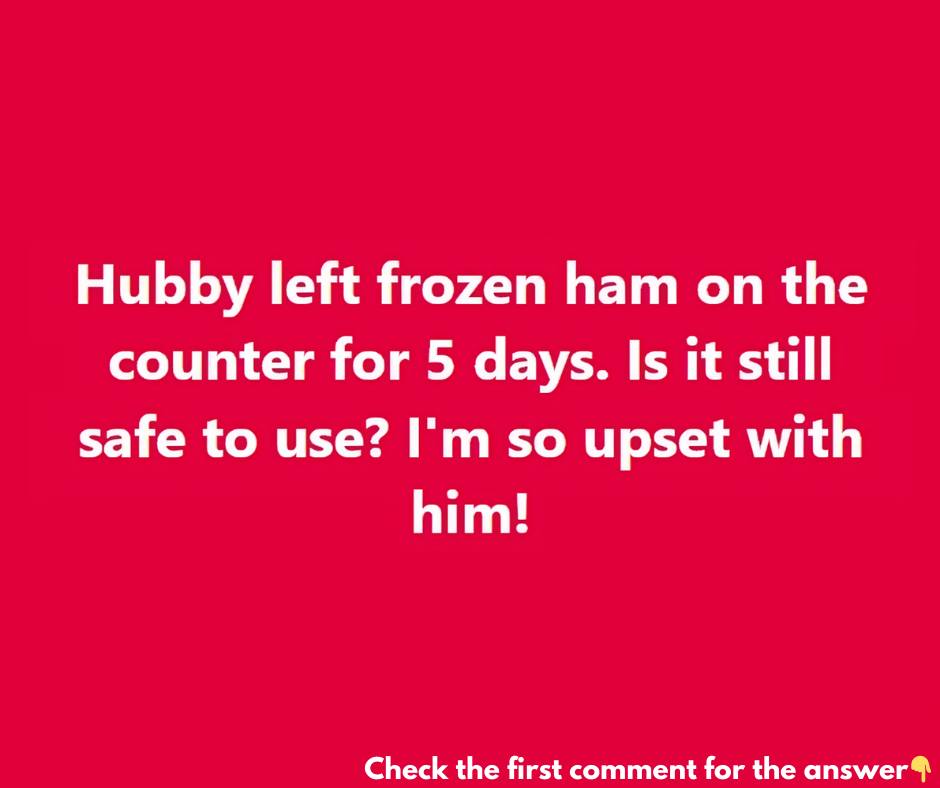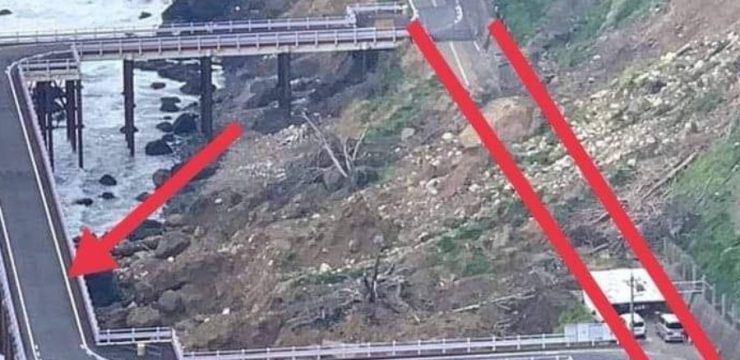Finding out that your husband left a frozen ham sitting on the counter for five days can be more than just a frustrating experience—it raises serious concerns about food safety. While it might be tempting to consider salvaging the ham, understanding the risks involved is crucial. Let’s break down the potential dangers, why food safety is important, and how to prevent similar mishaps in the future.

Why Leaving Meat Out Is Risky
Before deciding whether the ham is still usable, it’s important to understand why leaving meat out for extended periods is dangerous. Ham, like other perishable meats, requires proper storage to avoid becoming a breeding ground for harmful bacteria.
The Temperature Danger Zone
The “temperature danger zone” refers to the range between 40°F and 140°F (4°C to 60°C). This is where bacteria can grow rapidly. If food remains in this range for more than two hours, bacterial growth can increase significantly. In this case, leaving ham out for five days means it has been in this danger zone for much longer than the recommended safe time.
Bacterial Growth and Foodborne Illness
Bacteria such as Staphylococcus aureus, Salmonella, and E. coli thrive on perishable meats like ham. While these bacteria can’t always be seen or smelled, they can still cause foodborne illnesses. Symptoms may include nausea, vomiting, diarrhea, and stomach cramps—making it clear that the risk of consuming improperly stored meat is not worth taking.
Is the Ham Safe After Five Days?
The short answer is: No, the ham is not safe to eat after five days on the counter. Here’s why:
- Extended Exposure to the Danger Zone: The ham has been sitting in the danger zone for far too long, allowing harmful bacteria to grow. Even if you cook the ham, it might not be enough to eliminate the toxins produced by certain bacteria, as some are resistant to heat.
- Lack of Visible Spoilage: Just because the ham looks and smells okay doesn’t mean it’s safe. Harmful bacteria can thrive without any obvious signs of spoilage.
- Cooking Won’t Solve the Problem: While cooking can kill some bacteria, it won’t remove the toxins they’ve already produced. Once meat has spent an extended period in the danger zone, it’s no longer safe to eat, even if cooked thoroughly.
How to Prevent Future Food Safety Issues
While this incident might be upsetting, it’s a chance to improve food safety practices at home. Here are some effective tips to prevent similar situations:
- Refrigerate Meat Promptly: Make it a habit to refrigerate or freeze meat as soon as you bring it home from the store. Perishable foods should not be left at room temperature for more than two hours. Set your refrigerator to 40°F (4°C) or lower, and your freezer to 0°F (-18°C) or below.
- Thaw Meat Properly: Avoid thawing meat on the counter. Instead, defrost it in the refrigerator, which is the safest method. If you’re in a hurry, use a microwave or place the meat in a sealed bag and submerge it in cold water. Leaving it out at room temperature is a significant risk.
- Label and Date Your Food: When storing meat, use labels with dates to help you track how long it has been in the refrigerator or freezer. This simple step can prevent you from accidentally consuming spoiled food.
- Educate Your Family on Food Safety: Sometimes food mishaps happen because not everyone in the household understands proper storage techniques. Having a conversation with your family about food safety can help prevent similar issues in the future.
When in Doubt, Throw It Out
If you ever find yourself uncertain about whether food is safe to eat, it’s better to be cautious. Remember the golden rule: When in doubt, throw it out. The cost of a new ham is far less than the potential cost of medical treatment if you or someone in your family gets sick from foodborne bacteria.
Conclusion: Discard the Ham
In conclusion, the ham left out for five days on the counter is not safe to eat. It has spent too much time in the temperature danger zone, making it prone to bacterial contamination. Even if the ham appears fine, the risk of foodborne illness is too high. The safest choice is to dispose of the ham and adopt stricter food safety measures going forward.
Your health is always the top priority, so practicing proper food storage can prevent unnecessary worries and health risks. Remember, it’s always better to be safe than sorry when it comes to food safety!





